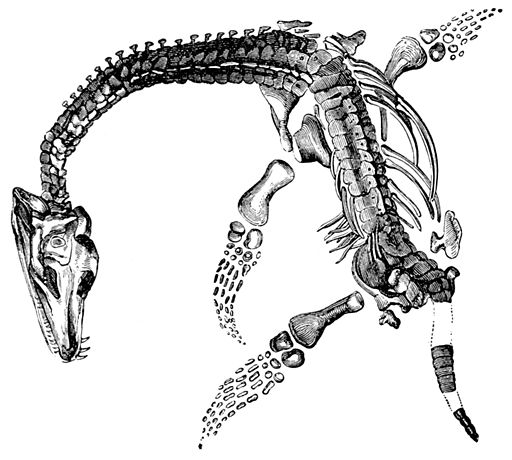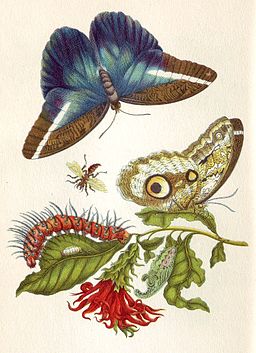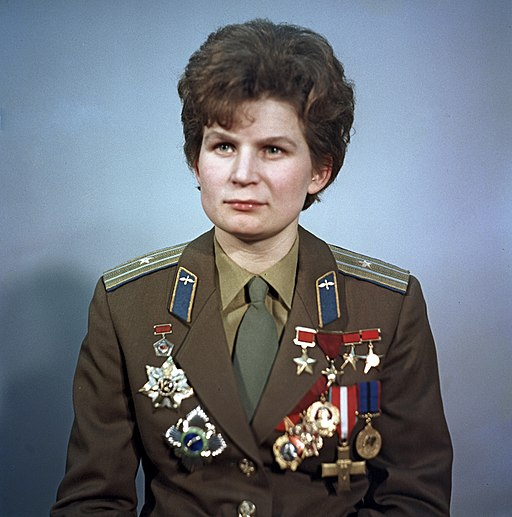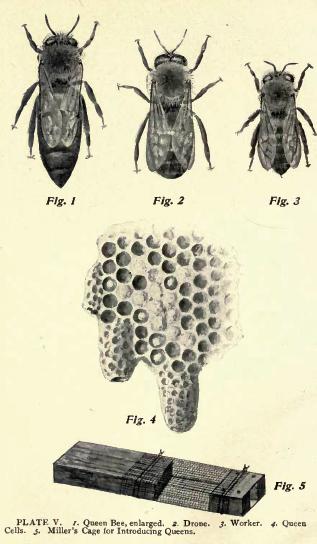On Pi Day I shared a round-up of science books including two that gave some names of women in science that I had not heard of. I decided to do some research and found books on some of them as well as other great women of science. So to end Women's History Month 2018 I thought I would share a bit about these amazing women. Let's start with Marie Tharp.
Marie Tharp was born in 1920 and was an American geologist. She worked with Bruce Heezen to map the ocean floor. She is known for understanding the Mid-Atlantic Ridge. Her work led to the belief in the plate tectonics and continental drift. You can see photographs of Marie Tharp here.
The book we found about Marie Tharp is this one.
Now we leave the ocean and go to the shores. The beach is where Mary Anning's story begins.
Mary Anning lived in Lyme Regis, England in the 1800's. She joined her father looking for rocks and shells on the beach near their house. The rocks were actually fossils. They would sell them to the tourists. After her father died Mary continued to gather rocks, fossils and shells to sell. When she learned that they were fossils she began looking for more of them since she discovered she could get more money for them. One of the books claims the tongue twister "She sells seashells by the seashore," is about Mary Anning. When she was twelve, Mary discovered the entire skeleton of an ichthysaurus. It was the first time an entire skeleton of this ancient animal was discovered. She talked to the scientists and they began to visit her and have her help them look for fossils and bones.
I found a few books on Mary Anning at our library. Here are a few that our library had.
Now I also found this book which includes Mary Anning in it as well as two more women to learn about!!
Finding Wonders also introduces Maria Sibylla Merian. Maria Sibylla Merian was born in 1647 and lived in Germany. Her stepfather was an artist and she learned from him. She was among the first to understand the process of metamorphosis for caterpillars into butterflies and how the various small animals like caterpillars depend on certain plants. She learned this by observing them. She is known as a naturalist and artist.
She published beautiful works of art showing the natural process of insects.
The third women in Finding Wonders is Maria Mitchell. Maria Mitchell lived in the 1800s in Nantucket, Massachusetts. She was an astronomer. She helped her father make star charts that helped the sailors travel safely. She observed the night sky and taught herself mathematics to understand it better. She also discovered a comet in 1847. She was the first American woman to work professionally as an astronomer.
Another astronomer was Henrietta Leavitt. Henrietta Swan Leavitt was born in 1868 in Massachusetts. She graduated from Radcliffe College and began working at Harvard University as a computer in 1893. Her job was to look at photographic plates and measure and record the brightness of stars. Her work and her own discoveries in these measurements allowed astronomers to measure the distances from Earth to faraway galaxies. After her death Hubble used her discoveries as well as other scientists to come up with the Hubble Law.
While we are talking about space, let's talk about the first women to go into space. Valentina Tereshkova is the woman with this honor. She is a retired Russian (then the Soviet Union) cosmonaut. During the Space Race, in 1962 Nikita Khrushchev decided to send a woman into space to score another first over the United States. The Soviet Union trained five women to be cosmonauts. Valentina Tereshkova was the one chosen to actually go into space. She boarded the Vostok 6 rocket on June 16, 1963 and launched into space. She made 48 orbits and actually passed within three miles of another Soviet cosmonaut. She was in space for almost three days. She only went into space this one time. In fact the Soviet Union did not send another women into space until 1982. Valentina married another cosmonaut, Andrian Nikolayev. They had a daughter on June 8, 1964. The doctors examined their daughter, Yelena, extra since they feared her parents' time in space might have affected her. She was the first child born to a mother and father who had traveled to space.
The book we found on Valentina Tereshkova is this one.
Now speaking of the Space Race we need to talk about Margaret Hamilton.
Margaret Hamilton was born in 1936 in Indiana. She went to college and studied mathematics. She moved to Boston, Massachusetts with plans to attend Brandies University and continue her mathematics study. She took an intern position at MIT (Massachusetts Institute of Technology) to develop software for weather prediction. From there she went on to work with NASA on the Apollo 11 Mission. It was her team who wrote the computer program that got the Lunar Lander to the moon and allowed Neil Armstrong to become the first person to walk on the moon. Three minutes before the Lunar lander reached the moon's surface there were warnings that the system was overloaded however Hamilton's software was ready for this and enabled the lander to make it to the moon and kept the astronauts safe.
Hamilton described software development at this time as the Wild West. No one knew exactly what to do so they experimented. She is a problem solver and tries to see all possibilities and plan for them. She also developed parts of coding while she was experimenting.
We found a couple of books about this amazing woman at our library.
Now wile talking about computer programming we should mention Ada Byron Lovelace and Grace Hopper. I have shared about these early female computer programmers. However I did find a new book on Grace Hopper.
Grace Hopper is known for coining the term bug in computer programs. She also made programming easier and helped develop COBOL programming language.
Our final amazing female scientist is Anna Comstock. Anna Comstock was born in 1854 in New York. She was the leader of the nature study movement and was an artist, educator, and conversationalist. She saw how schools were not teaching about nature and thought this was horrible. She developed her own curriculum to teach kids about nature and trained teachers to use it. She also knew that the kids needed to get outside to really appreciate nature. Perhaps our society today needs another Anna Comstock again to push our kids outside and away from their technology. What do you think?
Her illustrations were very detailed and really helped farmers identify insects and pests as well as teach kids about insects and nature.
The book we found on Anna Comstock was this one.
Now there are many more female scientists to check out, but this is a collection of women that for the most part I hadn't heard of and had books (some new) written for younger kids to learn about them. I am amazed to learn that so many of them have Massachusetts in their stories as well. I hope you will check them out. What women do you want to learn more about?
Marie Tharp was born in 1920 and was an American geologist. She worked with Bruce Heezen to map the ocean floor. She is known for understanding the Mid-Atlantic Ridge. Her work led to the belief in the plate tectonics and continental drift. You can see photographs of Marie Tharp here.
 |
| Map Model by Marie Tharp and Bruce Heezen By NOAA Photo Library (map00318) [CC BY 2.0], via Wikimedia Commons |
Now we leave the ocean and go to the shores. The beach is where Mary Anning's story begins.
 |
| Mary Anning By B. J. Donne [Public domain], via Wikimedia Commons |
Mary Anning lived in Lyme Regis, England in the 1800's. She joined her father looking for rocks and shells on the beach near their house. The rocks were actually fossils. They would sell them to the tourists. After her father died Mary continued to gather rocks, fossils and shells to sell. When she learned that they were fossils she began looking for more of them since she discovered she could get more money for them. One of the books claims the tongue twister "She sells seashells by the seashore," is about Mary Anning. When she was twelve, Mary discovered the entire skeleton of an ichthysaurus. It was the first time an entire skeleton of this ancient animal was discovered. She talked to the scientists and they began to visit her and have her help them look for fossils and bones.
 |
| Plesioosaur found by Anning By William Buckland. (http://laelaps.files.wordpress.com/2007/06/21a.jpg) [Public domain], via Wikimedia Commons |
I found a few books on Mary Anning at our library. Here are a few that our library had.
Now I also found this book which includes Mary Anning in it as well as two more women to learn about!!
Finding Wonders also introduces Maria Sibylla Merian. Maria Sibylla Merian was born in 1647 and lived in Germany. Her stepfather was an artist and she learned from him. She was among the first to understand the process of metamorphosis for caterpillars into butterflies and how the various small animals like caterpillars depend on certain plants. She learned this by observing them. She is known as a naturalist and artist.
 |
| Maria Sibylla Merian Jacobus Houbraken [Public domain], via Wikimedia Commons |
 |
| Merian Metamorphosis Maria Sibylla Merian [Public domain], via Wikimedia Commons |
 |
| Maria Mitchell By Julia Ward Howe (Reminiscences, 1819 – 1899 (opposite page 386)) [Public domain], via Wikimedia Commons |
Another astronomer was Henrietta Leavitt. Henrietta Swan Leavitt was born in 1868 in Massachusetts. She graduated from Radcliffe College and began working at Harvard University as a computer in 1893. Her job was to look at photographic plates and measure and record the brightness of stars. Her work and her own discoveries in these measurements allowed astronomers to measure the distances from Earth to faraway galaxies. After her death Hubble used her discoveries as well as other scientists to come up with the Hubble Law.
 |
| Henrietta Leavitt See page for author [Public domain], via Wikimedia Commons |
 |
| Valentina Tereshkova RIA Novosti archive, image #612748 / Alexander Mokletsov / CC-BY-SA 3.0 [CC BY-SA 3.0], via Wikimedia Commons |
The book we found on Valentina Tereshkova is this one.
Now speaking of the Space Race we need to talk about Margaret Hamilton.
 |
| Margaret Hamilton in 1995 By Daphne Weld Nichols, Photographer [CC BY-SA 3.0], via Wikimedia Commons |
Margaret Hamilton was born in 1936 in Indiana. She went to college and studied mathematics. She moved to Boston, Massachusetts with plans to attend Brandies University and continue her mathematics study. She took an intern position at MIT (Massachusetts Institute of Technology) to develop software for weather prediction. From there she went on to work with NASA on the Apollo 11 Mission. It was her team who wrote the computer program that got the Lunar Lander to the moon and allowed Neil Armstrong to become the first person to walk on the moon. Three minutes before the Lunar lander reached the moon's surface there were warnings that the system was overloaded however Hamilton's software was ready for this and enabled the lander to make it to the moon and kept the astronauts safe.
Hamilton described software development at this time as the Wild West. No one knew exactly what to do so they experimented. She is a problem solver and tries to see all possibilities and plan for them. She also developed parts of coding while she was experimenting.
We found a couple of books about this amazing woman at our library.
Now wile talking about computer programming we should mention Ada Byron Lovelace and Grace Hopper. I have shared about these early female computer programmers. However I did find a new book on Grace Hopper.
Grace Hopper is known for coining the term bug in computer programs. She also made programming easier and helped develop COBOL programming language.
 |
| Grace Hopper By James S. Davis [Public domain], via Wikimedia Commons |
 |
| Anna Botsford Comstock Public Domain, Link |
 |
| How to Keep Bees Plate V By Anna Botsford Comstock [Public domain], via Wikimedia Commons |
Now there are many more female scientists to check out, but this is a collection of women that for the most part I hadn't heard of and had books (some new) written for younger kids to learn about them. I am amazed to learn that so many of them have Massachusetts in their stories as well. I hope you will check them out. What women do you want to learn more about?








